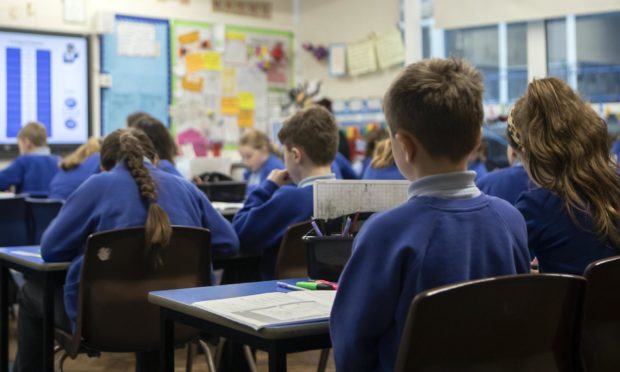The Scottish Government have come under fire over the lack of a national online learning plan for children who are forced to self-isolate.
As coronavirus cases rise in schools, parent campaign group 50/50 in school have said there will be inequalities among children due to differing home learning plans.
The group wrote to education leaders to demand answers on how children would be supported if they were unable to attend school.
In response, the government said the responsibility would lie with individual teachers and schools.
A national e-learning platform is currently being created for senior pupils in Scotland, the government have said.
However campaigners blasted the plans, as thousands of children could lose out on their education while in isolation.
Parents associated with the group, which has members from Tayside and Fife, have said some schools seem to be well organised and have been setting online tasks.
But in other cases, schools are not setting tasks for home learners, leaving parents to juggle work with sourcing activities online.
Sarah Chisnall, spokesperson for the 50/50 campaign, said many children would suffer if a second lockdown was called due to the digital inequalities.
She said: “This simply isn’t good enough from the Scottish Government.
“We are being told that schools are waiting for guidance and now it turns out that the plan for children who are self-isolating is down to an individual school’s own Digital Learning Strategy.
“Young people are already having to self-isolate. We need a national online learning platform for all children now, and not just for the senior years.
“We need a minimum standards and guaranteed contact with teachers for every child in Scotland.
“It should not be down to individual teachers, schools and parents to pick up the pieces for learning at home.
“We already know that some schools have no plans in place for learning at home.
“If they had to lock down tomorrow, we could be right back where we were in March, with a huge disparity between what schools are able to provide for at home learning. That is unacceptable.”
We received a reply from @scotgov to our group letter in August. We are really worried as ithighlights that the current work on a national e-learning platform being undertaken by Education Scotland and E-Sgoil will only be for senior phase pupils in secondary school (years S4-S6
— 5050inschool (@5050inschool) August 27, 2020
In a letter to campaigners, the Scottish Government said it is investing £30 million to support digital inclusion through the provision of devices and connectivity to disadvantaged children and young people, benefitting up to 70,000 people.
They also said a digital learning platform would be rolled out for senior pupils.
The letter said: “In addition Education Scotland is working with E-Sgoil, the digital platform, to develop a national e-learning provision for all senior phase pupils to access high quality lessons online learning by qualified teachers.
“This will help support and augment the work of classroom teachers when schools reopen, and will remain an important contingency in the eventuality of self-isolating learning or school closures.”
E-Sgoil was originally created to strengthen learning opportunities for pupils in the Western Isles, however it will be used for local authorities across the country.
The 50/50 group was formed in June after uniting over the lack of access to education during home learning.
They have since updated their ‘Five Asks’ to campaign for a national plan for home learning for pupils who have to isolate and as a contingency for another lockdown.
They also want a comprehensive strategy and plan to deal with young people’s post lockdown mental health, additional support to be made for those who have fallen behind and for those with additional support needs and a specific examination of outdoor learning provision.










